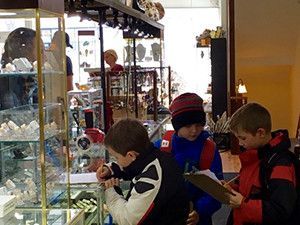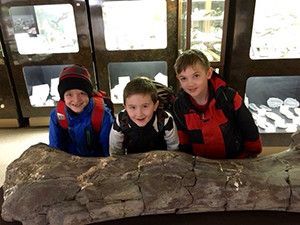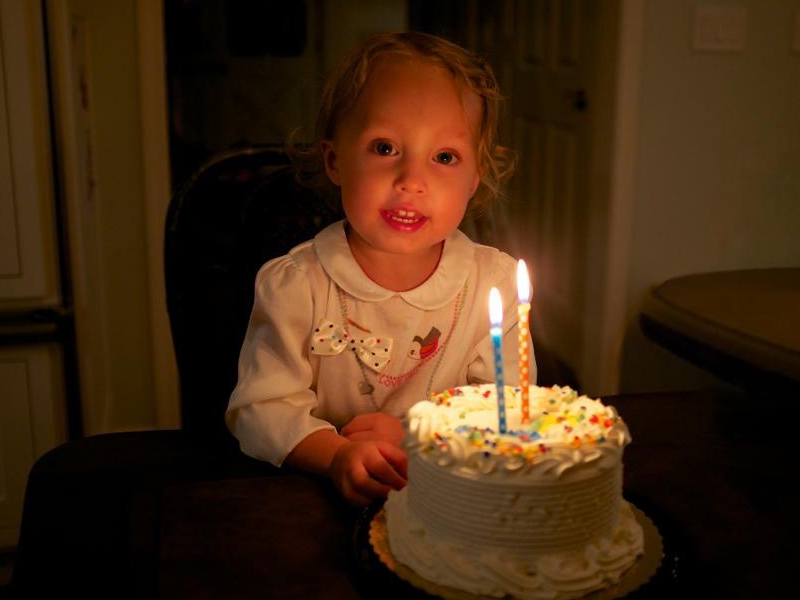
When you hear the expression “going out” you may think of dating, but at Forest Bluff the words are used quite literally to mean, “going out” of the building. A “going out” is an educational excursion that one to five Elementary students may organize as an extension of their classroom research. The students decide that they want to get information beyond what they have found in books. They speak with their teacher about their idea, look through our Rolodex of resources (ranging from Chicago’s museums to local specialists), and then plan all details of the experience. They make calls to secure a driving chaperone from the list of volunteer parents, study a road map to determine the location and directions for their driver, get permission forms signed by their teacher, their parents and the Head of School, and then write down a list of questions that they hope to find answers to on their “going out.”
I’ll share an example of this process: During a three-week period three boys in my classroom, ages seven and eight, enthusiastically studied rocks and minerals. Between math presentations and other work, they gathered research from books and wrote pages and pages of information they found interesting. “Did you know there is gold inside human bodies?” “How did it get there?” “Diamonds are the hardest gems.” “Guys! Tiny crystals are used in computers!”
I happened to find a rock for $4.00 in a store and thought of my little friends studying rocks and minerals. This rock supposedly had crystals inside it and could be easily broken open. I purchased and brought it in to school where the four of us wrapped it in tissue and struck it with a hammer. The first blow split the rock into two pieces. “Aww….” We simultaneously realized that we may have been fooled. “Let’s try with the bigger piece one more time!” one of the boys urged, and we hit it hard again. When I pulled back the tissue, we all gasped, “Crystals!” They immediately wanted to know more and asked if they could plan a “going out.”
These three boys were new to using the telephone so I realized they would need to write out what they would say when calling for a chaperone. They worked as a team, huddled over the phone, one holding the receiver to his ear, another urgently whispering suggestions, and the third holding the “script” up to be read. I listened in the hallway as the first one brave enough to be the speaker read off the paper in a monotone voice, “Hi, this is Gerry Smale. I’m calling from Forest Bluff School, and we were wondering if you can drive us to Dave’s Down to Earth Rock Shop in Evanston next Friday. If you can please call us back…thank you.”
There was initial success: “Mrs. Preschlack! She said she can take us if she can get a babysitter! She said she’ll call us back tomorrow!” Then, there was the subsequent message that the parent was unable to do it. This is part of the learning process, and it inadvertently provides the students more chances to gain experience and confidence using the phone. By the sixth call they were pros, actually remembering to leave the callback number and having a real dialogue with the stranger on the line.

We worked on their lists of questions for the “going out,” which started out as, “How are crystals formed?” “Hey, wait a minute, you wrote about that!” “Right…let’s think of something you want to know that you couldn’t find the answer for.” The eighth and ninth questions read: “Are there minerals that are harmful to humans?” and “What makes a crystal’s color?”
The students went on their educational excursion a week later and returned to school flushed with increased appreciation for their subject. They learned many things from the store manager about rocks and minerals, but perhaps more importantly, they learned about the world “out there,” and gained some real experience with it.
Adults must acknowledge that not every Elementary child wants to go on a “going out.” Teachers give encouraging nudges, but we find that only when a child is ready to handle an educational excursion will they be inspired to go through the planning process. Certain children will “go out” very few times during their six years in the elementary, but it is imperative that doing so is through their own interest and self-motivation. Unlike the school field trips we may have experienced as children, these independently planned educational excursions have personal meaning to each child involved. They have a real purpose: to gather specific information and bring it back to integrate into their topic of study. Even when they don’t go perfectly, (just like life!) the students grow from the experiences. “Going out” is just one of the many ways that Montessori education provides a link to the greater world for our children.



